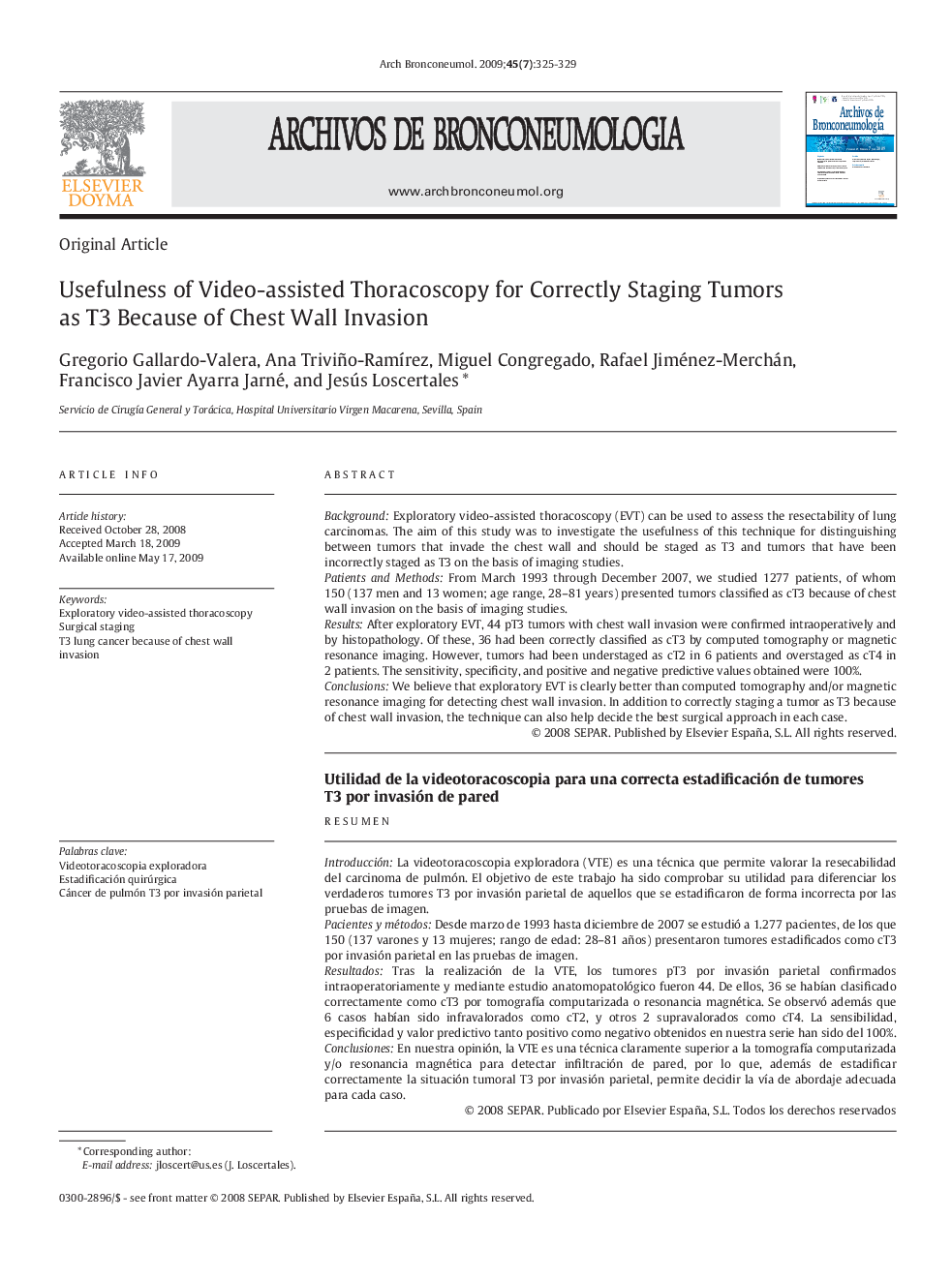| Article ID | Journal | Published Year | Pages | File Type |
|---|---|---|---|---|
| 4206715 | Archivos de Bronconeumología (English Edition) | 2009 | 4 Pages |
BackgroundExploratory video-assisted thoracoscopy (EVT) can be used to assess the resectability of lung carcinomas. The aim of this study was to investigate the usefulness of this technique for distinguishing between tumors that invade the chest wall and should be staged as T3 and tumors that have been incorrectly staged as T3 on the basis of imaging studies.Patients and MethodsFrom March 1993 through December 2007, we studied 1277 patients, of whom 150 (137 men and 13 women; age range, 28–81 years) presented tumors classified as cT3 because of chest wall invasion on the basis of imaging studies.ResultsAfter exploratory EVT, 44 pT3 tumors with chest wall invasion were confirmed intraoperatively and by histopathology. Of these, 36 had been correctly classified as cT3 by computed tomography or magnetic resonance imaging. However, tumors had been understaged as cT2 in 6 patients and overstaged as cT4 in 2 patients. The sensitivity, specificity, and positive and negative predictive values obtained were 100%.ConclusionsWe believe that exploratory EVT is clearly better than computed tomography and/or magnetic resonance imaging for detecting chest wall invasion. In addition to correctly staging a tumor as T3 because of chest wall invasion, the technique can also help decide the best surgical approach in each case.
ResumenIntroducciónLa videotoracoscopia exploradora (VTE) es una técnica que permite valorar la resecabilidad del carcinoma de pulmón. El objetivo de este trabajo ha sido comprobar su utilidad para diferenciar los verdaderos tumores T3 por invasión parietal de aquellos que se estadificaron de forma incorrecta por las pruebas de imagen.Pacientes y métodosDesde marzo de 1993 hasta diciembre de 2007 se estudió a 1.277 pacientes, de los que 150 (137 varones y 13 mujeres; rango de edad: 28–81 años) presentaron tumores estadificados como cT3 por invasión parietal en las pruebas de imagen.ResultadosTras la realización de la VTE, los tumores pT3 por invasión parietal confirmados intraoperatoriamente y mediante estudio anatomopatológico fueron 44. De ellos, 36 se habían clasificado correctamente como cT3 por tomografía computarizada o resonancia magnética. Se observó además que 6 casos habían sido infravalorados como cT2, y otros 2 supravalorados como cT4. La sensibilidad, especificidad y valor predictivo tanto positivo como negativo obtenidos en nuestra serie han sido del 100%.ConclusionesEn nuestra opinión, la VTE es una técnica claramente superior a la tomografía computarizada y/o resonancia magnética para detectar infiltración de pared, por lo que, además de estadificar correctamente la situación tumoral T3 por invasión parietal, permite decidir la vía de abordaje adecuada para cada caso.
